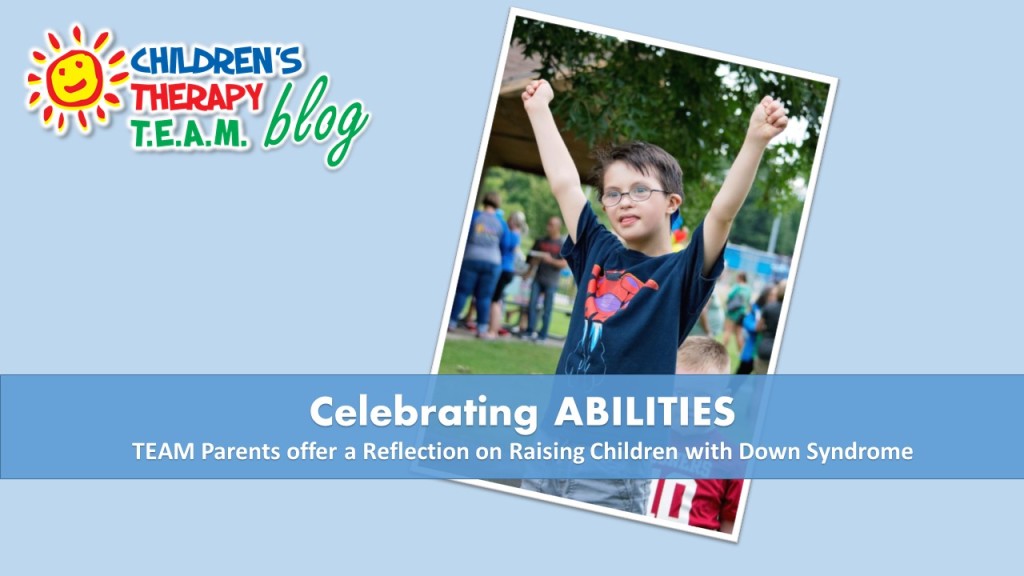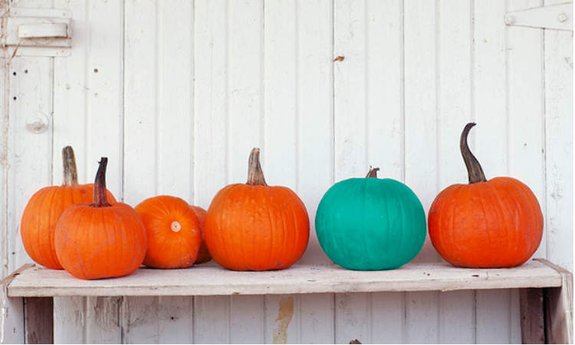During the month of October, we celebrate people with Down syndrome and help others become more aware of their abilities and accomplishments. It’s not about focusing on disabilities, it’s about celebrating abilities.
To gain a parenting perspective on Down syndrome, we turned to TEAM parents, James and Stephanie Mertz, to discuss their family’s story. James and Stephanie have two biological children who do not have Down syndrome, and two adopted children with Down syndrome.
Melissa: What made you choose to adopt children with Down syndrome, rather than "typical children"?
Stephanie: We had always felt open to adoption. With our first two pregnancies, prenatal testing showed a higher risk for Down syndrome. We just felt that was God’s way of preparing us for our life to come. I was also teaching in Special Education at the time, working with children of differing abilities. After our oldest two kids were born, we looked into adoption and just really felt God leading us to adopt kids with Down syndrome. We found a wonderful agency through a chain of events and were able to adopt both of our boys with Down syndrome through Spence-Chapin in New York.
Stephanie: We had always felt open to adoption. With our first two pregnancies, prenatal testing showed a higher risk for Down syndrome. We just felt that was God’s way of preparing us for our life to come. I was also teaching in Special Education at the time, working with children of differing abilities. After our oldest two kids were born, we looked into adoption and just really felt God leading us to adopt kids with Down syndrome. We found a wonderful agency through a chain of events and were able to adopt both of our boys with Down syndrome through Spence-Chapin in New York.
Melissa: How is parenting a child with Down syndrome the same as parenting your "typical children," and how is it different?
Stephanie: We have 2 older biological children who do not have Down syndrome. You would think they would be easier to parent than our two children with Down syndrome. This is not always the case. Our kids who do not have Down syndrome can be just as difficult to parent. They are currently teenagers and have minds of their own.
Stephanie: We have 2 older biological children who do not have Down syndrome. You would think they would be easier to parent than our two children with Down syndrome. This is not always the case. Our kids who do not have Down syndrome can be just as difficult to parent. They are currently teenagers and have minds of their own.
Raising two kids with Down syndrome certainly has it’s challenges. Most of the time, especially when they were very little, I didn’t think of them as different unless we went somewhere like maybe the park. Other kids were running and playing, whereas mine weren’t very mobile yet, even though they were the same age or older than the kids playing at the park. I honestly don’t think of them as having a disability until a challenge arises that prevents them from doing something like their same-age peers. They are children just like everyone else. They laugh, cry, reach milestones, throw fits, etc., just like all other kids do. The Down syndrome part is secondary to who they are. When I notice the differences between them and their peers, it’s things like meeting a milestone, but in a completely different time frame than other kids do. For example, a phase that a typical child goes through in 6 months may last a couple of years in a child with Down syndrome. They throw fits, just like their peers do. The difference is that it’s my 10 year old throwing that fit in the doctor’s office, not a 2 year old.
You sometimes have to get creative when it comes to helping them understand what it is you want or need them to do. You have to remember that just because they are 10 doesn’t mean they are going to act like your typical 10 year old. However, you also can’t treat them like the 3-4 year old they may be acting or thinking like. There is a fine line between parenting them respectfully (due to the fact that they are older than they act) and parenting them at their developmental age. There are other challenges when their chronological age is greater than their developmental age, like a seven year old who isn’t potty trained is much more challenging to deal with than a much smaller child.
Melissa: In your opinion, what are the benefits/joys/gifts of having a child with Down syndrome?
Stephanie: There are so many joys in raising a child with Down syndrome. The greatest thing is that they see life through the eyes of a child for so long, whereas the rest of us “grow up” and become hardened to the world. There is also nothing like the sound of our boys’ genuine laughter of pure joy. I have also found, as have many of our friends and family, that through the boys, we have learned to appreciate so much more in life. We appreciate the seemingly small achievements that are such big achievements for them, like being able to tie our shoes. Seeing how others relate to the boys is also very rewarding. Our boys seem to bring out the best in people and have touched so many lives.
Stephanie: There are so many joys in raising a child with Down syndrome. The greatest thing is that they see life through the eyes of a child for so long, whereas the rest of us “grow up” and become hardened to the world. There is also nothing like the sound of our boys’ genuine laughter of pure joy. I have also found, as have many of our friends and family, that through the boys, we have learned to appreciate so much more in life. We appreciate the seemingly small achievements that are such big achievements for them, like being able to tie our shoes. Seeing how others relate to the boys is also very rewarding. Our boys seem to bring out the best in people and have touched so many lives.
A special thanks to James and Stephanie Mertz for their wonderful insight into the special challenges and joys of parenting children with Down syndrome!
Down syndrome (DS), also called Trisomy 21, is a condition in which extra genetic material causes delays in how a child develops, both mentally and physically. (kidshealth.org)
Down syndrome (DS), also called Trisomy 21, is a condition in which extra genetic material causes delays in how a child develops, both mentally and physically. (kidshealth.org)
- DS can present with a wide range of developmental delays and health problems, from very mild to more severe. Some of the ways Down syndrome can affect individuals include:
- Low muscle tone
- Intellectual delays
- Slower growth rate
- Heart defects
- Hearing and vision difficulties
- Spinal instability
- 1 in every 691 babies in the US are born with Down syndrome – About 6,000 per year (www.ndss.org)
- There are approximately 400,000 people currently living with Down syndrome in the United States (www.ndss.org)



